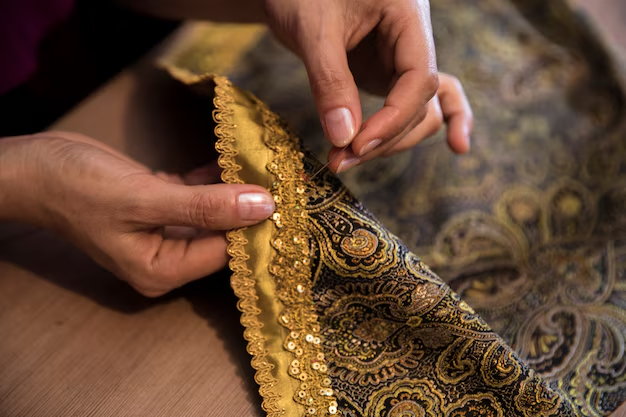
Cultural diversity is one of the most beautiful aspects of human existence. Across the globe, people belong to different cultures, each with its own set of traditions, languages, art, customs, and values. This vast diversity not only enriches our experiences but also contributes to a deeper understanding of the human condition, reminding us of our shared humanity while celebrating our unique differences. In a world that is becoming increasingly interconnected, recognizing and embracing cultural diversity is essential for fostering global harmony, empathy, and mutual respect. This article explores the importance of cultural diversity, its impact on societies, and how we can celebrate and learn from the world’s rich heritage.
The Importance of Cultural Diversity
- Enriching Our Lives
Cultural diversity opens our eyes to new perspectives, ideas, and ways of life. It encourages us to see the world through different lenses and appreciate the beauty of varied traditions, practices, and beliefs. Whether through food, music, art, or language, each culture contributes to the broader human experience, offering a wealth of knowledge and creativity. For example, the fusion of diverse musical styles, such as jazz in the U.S., reggae in Jamaica, or flamenco in Spain, demonstrates how cultural exchange can produce powerful and innovative forms of artistic expression. By interacting with diverse cultures, we enrich our own lives, gain greater knowledge, and expand our worldview. Through travel, reading, or simply connecting with people from different backgrounds, we open ourselves to the opportunity to discover new traditions, rituals, and lifestyles that inspire and broaden our horizons. - Strengthening Social Cohesion and Tolerance
In a multicultural world, embracing diversity fosters social cohesion by promoting inclusivity and mutual respect. Understanding different cultures helps to break down stereotypes and combat prejudice, fostering greater acceptance of people from various backgrounds. This is especially crucial in increasingly diverse societies where individuals from different cultures must coexist and work together in peace. Education plays a pivotal role in promoting cultural understanding. By teaching children and young adults about the richness of the world’s cultures, we can cultivate empathy and respect from an early age. Celebrating cultural diversity in schools, workplaces, and public spaces encourages people to appreciate the value of inclusivity, tolerance, and unity. - Driving Innovation and Creativity
Cultural diversity also fuels creativity and innovation. When people from different cultural backgrounds come together, they bring with them unique ideas, perspectives, and problem-solving approaches. This diversity of thought can lead to more creative solutions to global challenges and contribute to innovation in areas like technology, art, business, and science. For example, multicultural teams in the workplace are often more successful at developing groundbreaking ideas because they combine diverse experiences and viewpoints. In the field of technology, cultural diversity has led to the development of products and services that are more inclusive and adaptable to different markets and user needs. - Preserving Heritage and Traditions
Cultural diversity also reminds us of the importance of preserving and celebrating the heritage of different peoples. Each culture carries a rich history, often passed down through generations via oral traditions, folklore, rituals, and crafts. These cultural expressions provide a sense of identity and continuity for communities and offer insights into their values and beliefs. However, as globalization continues to influence societies, many traditional practices and languages are at risk of being lost. Celebrating cultural diversity means actively protecting and nurturing these heritage elements through the promotion of indigenous languages, art forms, and traditions. This not only benefits the cultural community itself but also enriches the global cultural landscape.
Celebrating Cultural Diversity Around the World
- Festivals and Celebrations
Around the world, festivals serve as one of the most prominent ways to celebrate cultural diversity. They are a time for communities to showcase their customs, art, music, and food, allowing people to experience and appreciate cultures other than their own. Some notable examples include:- Diwali (India): Known as the Festival of Lights, Diwali is celebrated by millions of Hindus, Sikhs, Jains, and Buddhists around the world. It symbolizes the victory of light over darkness and good over evil. People decorate their homes with oil lamps, share meals, and engage in religious ceremonies.
- Chinese New Year (China): This vibrant festival marks the beginning of the lunar calendar and is celebrated with dragon dances, fireworks, family reunions, and the giving of red envelopes filled with money for good luck.
- Carnival (Brazil): The Carnival in Rio de Janeiro is one of the largest and most famous festivals globally. It is a colorful celebration of Brazilian culture with samba parades, elaborate costumes, and music.
- Oktoberfest (Germany): Held annually in Munich, Oktoberfest is a festival celebrating Bavarian traditions, food, beer, and music. It’s an example of how a cultural celebration can have a global impact, attracting millions of visitors from around the world.
- Cultural Exchange Programs
Cultural exchange programs play an important role in bringing people together from different parts of the world. These programs, whether through student exchanges, volunteer programs, or artist residencies, enable individuals to experience and immerse themselves in other cultures firsthand. By doing so, participants gain a deeper understanding of global issues, languages, customs, and everyday life in other countries. Cultural exchange programs help bridge gaps between cultures, allowing participants to form lasting relationships and become ambassadors for mutual understanding. Whether a student living abroad or an artist collaborating with others in a different country, cultural exchange fosters open-mindedness, respect, and global solidarity. - Cultural Institutions and Museums
Museums, galleries, and cultural institutions serve as important spaces for celebrating and preserving cultural diversity. Institutions like the Smithsonian Institution in the United States, the British Museum in the United Kingdom, and the Louvre in France house vast collections of artifacts, artworks, and historical objects that reflect the diversity of human culture. These institutions educate the public about the richness of various traditions, offering exhibitions that showcase the art, history, and achievements of different peoples. Cultural institutions also provide platforms for contemporary artists from diverse backgrounds to express their unique perspectives. This helps bring greater visibility to marginalized cultures and promotes cross-cultural dialogue through art. - Cuisine as a Celebration of Culture
Food is an essential element of cultural identity and provides a delicious way to celebrate cultural diversity. From Italian pasta to Japanese sushi, Mexican tacos to Indian curry, each culture has its own culinary traditions that reflect its history, geography, and values. Food brings people together—whether through family meals, festivals, or street food markets—and is often a gateway for exploring different cultures. Food festivals and international restaurants allow individuals to experience the flavors of the world without leaving their communities. This culinary exchange fosters appreciation for the diverse ways in which people prepare, cook, and share meals, while highlighting the universal human experience of eating and celebrating together.
The Challenges of Cultural Diversity
While cultural diversity offers many benefits, it also presents challenges. As communities become more interconnected, cultural differences may give rise to misunderstandings, prejudice, or tension. These challenges can be overcome through education, open dialogue, and the promotion of intercultural communication. It’s important to remember that cultural diversity is not about erasing differences but about embracing and learning from them.
Conclusion
Cultural diversity is a source of strength, creativity, and unity. It is an essential part of the human experience that enriches our lives, promotes social cohesion, and drives innovation. By celebrating and respecting the diverse traditions, languages, and practices of different cultures, we create a more inclusive, empathetic, and understanding world. From festivals and cuisine to art and exchange programs, there are countless ways to honor the rich heritage of the world’s cultures. As we celebrate our differences, we come to realize that, despite our diversity, we share a common humanity that connects us all.



